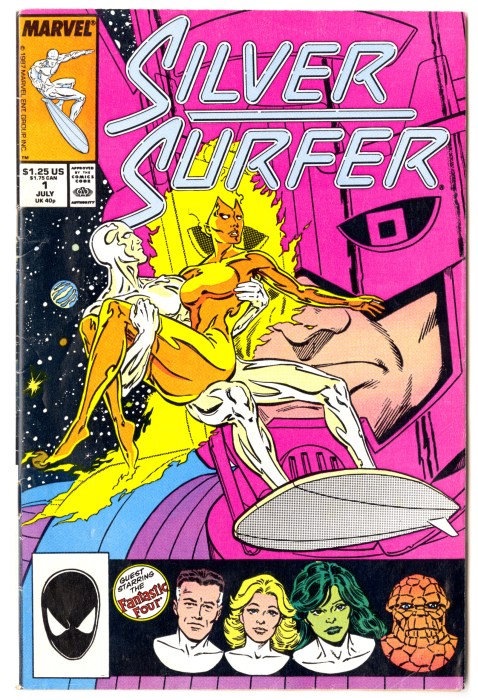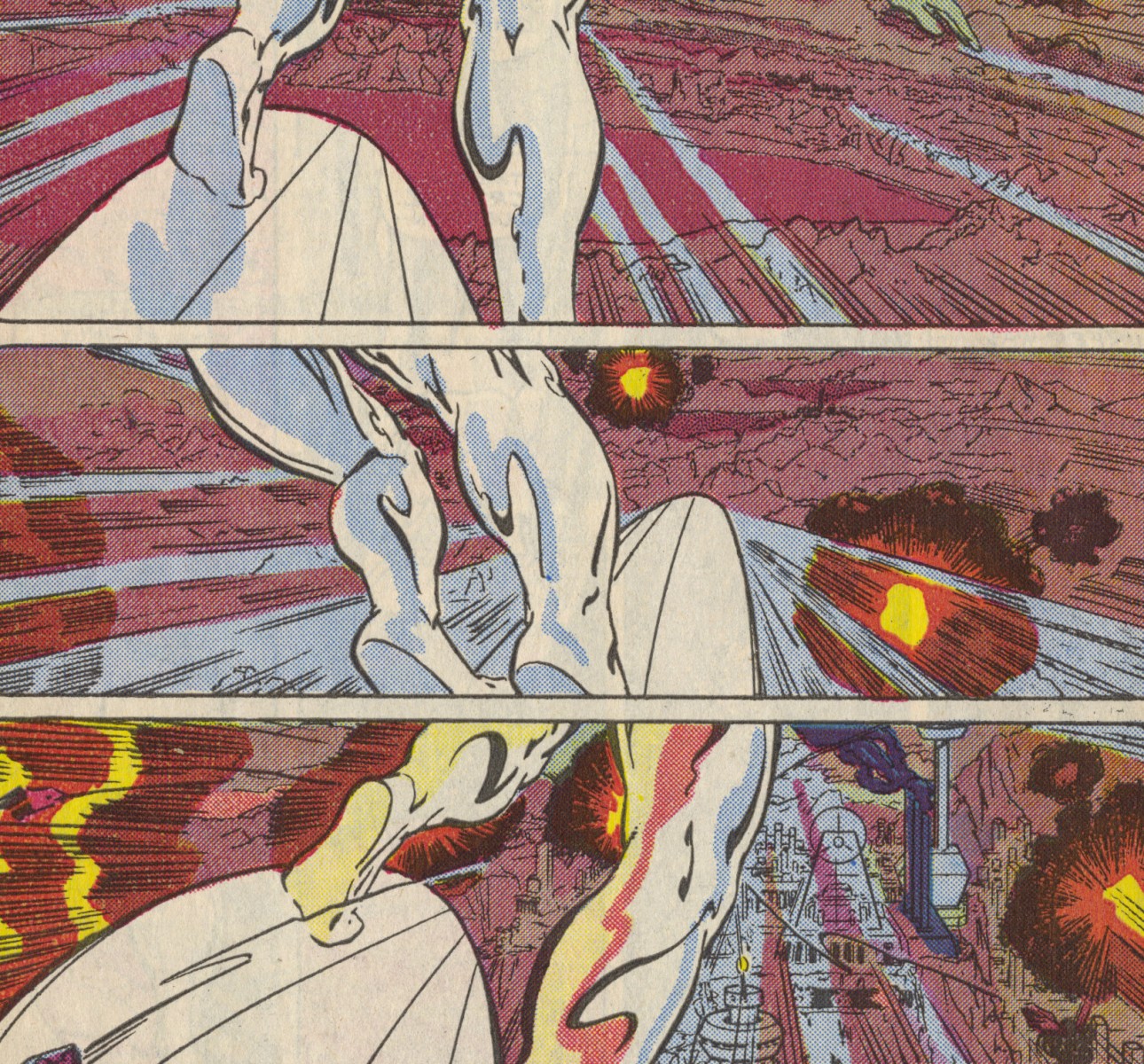Space Is The Place
The 1987 Silver Surfer series is an under-appreciated high point in Marvel’s stable of comics during the tail end of the Event Horizon.

The Silver Surfer has had a fraught career in the Marvel Universe. It’s an iconic character from the early golden Kirby/Lee age of the Fantastic Four. He became a popular guest star and a one-time member of the Defenders, but he never really came into his own as a character. (check The Silver Surfer’s convoluted back story here) Instantly recognizable, the Surfer was a compelling cosmic character. His imprisonment on Earth (by his former master, Galactus) created the impression of being a failure due to the Surfer’s “constant whining” about his predicament.
The 1987 series writer Steve Englehart (drawn (and colored) by Marshall Rogers and inked by Josef Rubenstein) consciously addressed the character’s shortcomings. In the first issue, the Silver Surfer is finally set free!
One thing to note is the density of the narrative. The Surfer runs into the Fantastic Four as they investigate the hole in the ozone layer in Antarctica. The team quickly solves the mystery when the Surfer admits to depleting the ozone in another futile attempt to break Galactus’ barrier.
Out of the blue, Champion, one of the Elders of the Universe, attacks the Surfer. The Surfer wins and demands an explanation by right of victory. Champion launches into one of the several info dumps that convey massive amounts of information:
- A recap of the entirety of Silver Surfers’ Marvel history
- The Skrulls have lost their ability to shapeshift, and as a result, a new Kree-Skrull war is brewing
- The vague contours of the Elders’ scheme behind it all begin to take shape
All of the above ties into a decades-long Marvel history, much of it written by Englehart. That’s all on top of the main narrative!
Once the Surfer dispatches Champion, Ben Grimm stumbles into an ingenious solution to the Surfer’s imprisonment. And, after a few pages, the Surfer is free! Instantly, the Surfer’s true nature is on full display as he surfs the cosmic spaceways. For the Surfer, space is the place.

Master And Servant
But, before he can fully taste his new freedom, the Surfer must confront his jailer, his former master, Galactus. To remain free, Galactus must lift the punishment that bound the Surfer to Earth for so long. Silver Surfer proposes to free Nova (the current herald of Galactus) in exchange for a pardon. The two strike a bargain (Fig. 3).

The Skrulls hold Nova hostage on an “expandable” planet guarded by three million “expandable” fanatical Skrulls. The Skrulls, desperate to keep their secret: the loss of their species’ shapeshifting ability. They fear their eternal rivals, the Kree, would take advantage of their moment of weakness and invade. The Skrulls want to trade Nova’s life to force Galactus to consume the thousands of Kree planets! They want to turn the very forces of the cosmos against their rivals! Nova’s trap is specially designed to confound any effort by Galactus. The Surfer can succeed where Galactus would fail.

Marshall Rogers wonderfully visualizes the rescue sequence. First, the Surfer descends from space in a series of vertical panels emphasizing the distance traveled (Fig 2.). Then Rogers switches to horizontal panels as we see the changing ground below the Surfers board. The reader’s POV is like sitting on the board behind the Surfer. Then, two full-page splash pages of the Surfer penetrating massive barriers surrounding the central device that holds the captured Nova (Fig. 4).

On the next page, the Surfer locates Nova in three vertical panels (Fig 5). On the subsequent page, three more vertical panels follow the Surfer, holding Nova, and escapes into space (Fig. 6). The denouement is another splash page of the Surfer holding the weakened Nova as they speed away from the Skrull planet (Fig. 7). It’s a masterful sequence that shows off the narrative and visual power of the medium.


It’s a great example of the push-pull between comics-specific realism and abstraction. Rogers reserves realism for characters and environments, while abstract visuals depict speed, energy, and superpowers. The old cartoon jokes (Fig. 8) about abstract art found their full narrative use in American superhero comics. The artist/cartoonist Keith Tilford had a few salient observations on this subject:
[George Pereze] understood abstraction via storytelling and had an incredibly strong design sense. I also thought immediately when Stephen Platt came onto the scene that there was a connection there. I still see it, and I am always interested in how these kinds of formal translations take place in comics.
Keith Tilford – TCJ Interview

The art Avant-Garde “discovered” abstract visual expression. Still, comic books found the proper subject for the experiments: to visualize the intangible, unrealized, speculative, and hidden “cosmic” forces unleashed or uncovered by the technological revolution.
Moments like the above sequence and (elsewhere) show how integrated the Avant Garde experiments of the first half of the 20th century have become on the pages of American superhero comic books.
The Surfer returns Nova to Galactus and receives a pardon. The master/servant relationship no longer binds the two.

It’s another great moment for the character. No longer confined to Earth, his conscience clear, The Silver Surfer surfs the cosmic spaceways!

